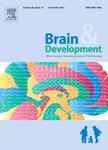版权所有:内蒙古大学图书馆 技术提供:维普资讯• 智图
内蒙古自治区呼和浩特市赛罕区大学西街235号 邮编: 010021

作者机构:Analog and Mixed-Signal Center Department of Electrical and Computer Engineering Texas A and M University College StationTX United States
出 版 物:《IEEE Transactions on Power Electronics》 (IEEE Trans Power Electron)
年 卷 期:2015年第30卷第9期
页 面:5125-5135页
核心收录:
学科分类:0810[工学-信息与通信工程] 0711[理学-系统科学] 0808[工学-电气工程] 080802[工学-电力系统及其自动化] 0809[工学-电子科学与技术(可授工学、理学学位)] 08[工学] 0807[工学-动力工程及工程热物理] 0702[理学-物理学]
基 金:Silicon Laboratories Texas Instruments Qualcomm
摘 要:The design tradeoffs of the class-D amplifier (CDA) for driving piezoelectric (PZ) speakers are presented, including efficiency, linearity, and electromagnetic interference. An implementation is proposed to achieve high efficiency in the CDA architecture for PZ speakers to extend battery life in mobile devices. A self-oscillating closed-loop architecture is used to obviate the need for a carrier signal generator to achieve low power consumption. The use of stacked-cascode CMOS transistors at the H-bridge output stage provides low-input capacitance to allow high-switching frequency to improve linearity with high efficiency. Moreover, the CDA monolithic implementation achieves 18 $V-{\rm PP}$ output voltage swing in a low-voltage CMOS technology without requiring expensive high-voltage semiconductor devices. The prototype experimental results achieved a minimum THD $+$ N of 0.025%, and a maximum efficiency of 96%. Compared to available CDA for PZ speakers, the proposed CDA achieved higher linearity, lower power consumption, and higher efficiency. © 1986-2012 IEEE.